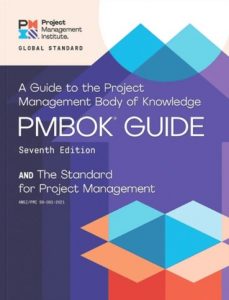
Project managers have one of the most important jobs there is.
Charged with delivering unique projects that often transform business processes or introduce critical products and services, they must navigate uncharted territory with precision. They play a pivotal role in driving organizational success by steering complex, one-of-a-kind initiatives to completion.
Unlike repetitive operations, projects demand meticulous planning and flawless execution, making the project manager’s role both challenging and indispensable.
The five main roles of the project manager are:
- Implement a project management methodology
- Plan the project
- Execute the Plan
- Project control
- Close the project
Implement a Project Management Methodology
There are three main methodologies in use for project management.
- Project Management Body of Knowledge (PMBOK)
 The PMBOK Guide is the most used standard. Developed by the Project Management Institute (PMI) in the United States, it divides the management of projects into eight project performance domains. The performance domains represent the areas that each project must manage to ensure that the project runs smoothly and meets the requirements of its stakeholders.
The PMBOK Guide is the most used standard. Developed by the Project Management Institute (PMI) in the United States, it divides the management of projects into eight project performance domains. The performance domains represent the areas that each project must manage to ensure that the project runs smoothly and meets the requirements of its stakeholders. - PRINCE2
Originally developed by the UK government (and still mandated as a requirement for most government projects), PRINCE2 stands for Projects In Controlled Environments. PRINCE2 is system of project organization rather than a general project management methodology. That is, it defines a specific project organizational structure, roles and responsibilities which must be filled in order for the project to be considered a PRINCE2 project. General project management principles like earned value management, scheduling, and risk analysis are not part of the PRINCE2 method. - Individual Competence Baseline (ICB4)
Developed by the International Project Management Association (IPMA), the ICB4 methodology is a standard for the evaluation of project manager competence. Hence, it includes the correct application of project management principles but it does not define a method or framework for managing a project. The guide is divided into 24 competence elements each of which contain key competence indicators which can be used to judge a project manager. The standard is used throughout the world but each country has its own unique implementation via country-specific project management organizations that support the standard.
Plan the Project
 The common thread throughout all of the project management methodologies, and the one big thing that separates professional project management from other project management, is planning.
The common thread throughout all of the project management methodologies, and the one big thing that separates professional project management from other project management, is planning.
The PMBOK Guide specifies the creation of the project management plan, which contains the following parts:
- Project scope
- Project schedule
- Project budget
- Quality management plan
- Communications management plan
- Stakeholder engagement plan
- Risk analysis
- Procurement management plan
The project manager’s role during project planning is a central one. They are responsible for the development of the plan and for making any changes until it is approved by the project sponsor.
Development of the project management plan is a step by step process:
- Write the project scope statement
- Divide the project into tasks
- Estimate the task resources
- Determine the task budget
- Produce the overall project schedule and budget
- Identify stakeholders
- Perform stakeholder analysis
- Determine project communication
- Identify risks
- Perform risk analysis
- Determine project change procedures
The project management plan should be formally approved by the project sponsor or executive (above the project) so that future changes can be tracked and approved.
Ensure Execution According to the Plan
 Once the project has been planned, the execution phase begins. Along with this phase change the project manager’s role changes as well. During project execution, the project team performs the project’s tasks. The project manager’s role involves:
Once the project has been planned, the execution phase begins. Along with this phase change the project manager’s role changes as well. During project execution, the project team performs the project’s tasks. The project manager’s role involves:
- Leadership
The project manager must provide leadership and vision for the project’s end products or services. What do they look like, how do they work, and most importantly how does it make people feel. The project team must know what they are working towards. Also, the project manager’s enthusiasm is contagious and creates excitement that people want to be a part of. - Stakeholder Communication
The stakeholders are anyone who has a “stake” in the project. From the executives and project sponsor to the project team who carries out the work, to external stakeholders that begrudge the project, the stakeholders must be satisfied or the project is not a success. Stakeholders represent the “people” part of the project, and communication with them is just as important as technical excellence. In fact, many projects have finished with happy stakeholders in spite of average technical work, which, although not recommended as a project management strategy, is enough to produce a successful project. - Project changes
Very few projects do not experience some form of mid-project change from their original plan, which results in one of the project manager’s most difficult day-to-day tasks – managing the change. It almost always comes with a change in the project budget or schedule, or a change in a stakeholder’s acceptance of the project. The project manager’s role is to navigate the project changes with skill and tactfulness while making strong decisions that move the project forward.
Project Control
 Another strong attribute of professional project management is called project control. This is a project management tool which involves the systematic monitoring of project objectives like quality, schedule, budget, and stakeholder communications, and the change of project plans if they are not fulfilling their goals.
Another strong attribute of professional project management is called project control. This is a project management tool which involves the systematic monitoring of project objectives like quality, schedule, budget, and stakeholder communications, and the change of project plans if they are not fulfilling their goals.
Most project control activities focus on the budget and schedule, although there are several other important variables. On a weekly (or any adequate) status period, the project manager determines the budget and schedule status of the project and determines whether the project is meeting the plan. That is, whether the project is on budget and schedule.
The PMBOK Guide specifies a process called earned value management. In this method, each task is assessed a:
- Planned Value (PV)
The planned progress expressed as a project budget. For example, if it’s June 10 and the task “Dig Holes” has a schedule of June 1 – June 20, and a budget of $10,000, PV = $10,000/2 = $5,000. - Earned Value (EV)
The actual progress complete expressed as a project budget. For example, if the same task is 25% complete, EV = $10,000 * 25% = $2,500. - Actual Cost (AC)
The actual cost of the task is tracked from software, timesheets, receipts, etc.
These three variables are compiled into a set of simple calculations that tell you:
- The current status
The Schedule Variance (SV), Schedule Performance Index (SPI), Cost Variance (CV), and Cost Performance Index (CPI) tell you where the project is right now. - The forecast
The Estimate at Completion (EAC), Estimate to Complete (ETC), Variance at Completion (VAC), and To Complete Performance Index (TCPI) give you the forecast for where the project is heading. They tell you which direction the ship is pointing.
We have written extensively on the earned value method here at ProjectEngineer. Please read our Guide to Earned Value Management if you wish to learn more.
There are several other knowledge areas that require project control, such as stakeholder communication, risk analysis, and project scope. Each of these things must be inspected, like the schedule and budget, to ensure they are performing according to the project plan and take corrective action if they are not.











Leave a Reply